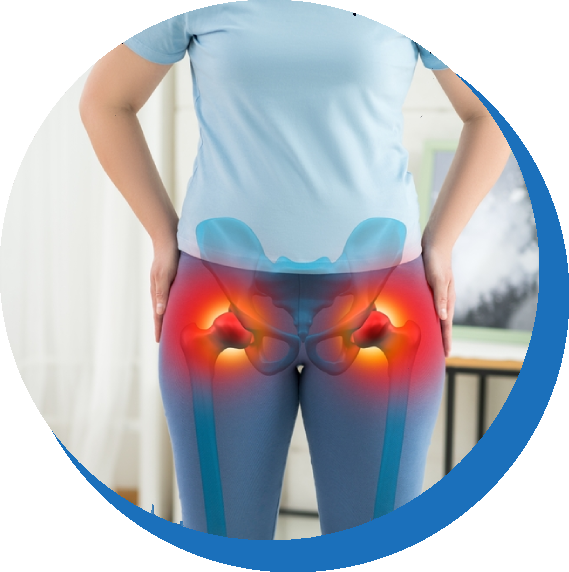Pelvic Pain
Pelvic Pain Management at Cellara Pain Institute
Pelvic pain can affect both men and women and often varies in origin, intensity, and duration from one patient to another. At Cellara Pain Institute, our Harvard-trained physicians are committed to identifying the root cause of your pain and providing personalized treatment options to help manage your condition effectively.
We understand that pelvic pain can be complex and disruptive to daily life. That’s why we take a comprehensive approach—working closely with you to accurately diagnose the issue and develop a care plan tailored to your specific needs and symptoms.
What is Pelvic Pain?
Pelvic pain refers to discomfort in the lower abdomen—between the belly button and the groin—and may also involve the prostate in men. This type of pain can stem from various systems within the body, including the reproductive, urinary, gastrointestinal, and musculoskeletal systems.
Pelvic pain is typically classified as:
Acute Pelvic Pain – Sudden in onset and often intense, typically linked to a specific condition or injury.
Chronic Pelvic Pain – Lasts beyond the normal healing period, often for months or even years. This pain may be constant or intermittent and can significantly interfere with daily activities.
According to the U.S. Department of Health and Human Services, studies show that approximately 15% of women and 10% of men in the United States experience chronic pelvic pain that disrupts their ability to work, move, and live comfortably.

What Causes Pelvic Pain?
Pelvic pain can arise from a variety of conditions affecting both men and women. If left untreated, it can lead to serious health complications, including infertility. Since pelvic pain may originate from the reproductive, urinary, gastrointestinal, or musculoskeletal systems, identifying the underlying cause is essential for effective treatment.
Causes of Pelvic Pain in Men
Interstitial Cystitis
Chronic inflammation of the bladder wall that can lead to scarring and reduced bladder capacity, often causing urinary discomfort and pelvic pain.Hernia
Occurs when soft tissue pushes through a weak spot in the abdominal muscles, creating pressure and discomfort in the pelvic region.Dyspareunia
Pain during or after sexual intercourse, sometimes accompanied by burning sensations, particularly during or after ejaculation.Pudendal Neuralgia
Caused by compression or irritation of the pudendal nerve, which runs from the lower back to the genitals, leading to sharp or burning pain in the pelvic area.
Causes of Pelvic Pain in Women
Pelvic Congestion Syndrome
Characterized by varicose veins around the ovaries that lead to blood pooling and pelvic pressure, especially after prolonged standing or physical activity.Chronic Vulvovaginitis
Inflammation or infection of the vulva and vagina, causing symptoms like itching, pain, discharge, and unpleasant odor.Dyspareunia
Persistent genital pain before, during, or after intercourse. This condition can affect physical intimacy and emotional well-being.Endometriosis
A condition in which tissue similar to the uterine lining grows outside the uterus. It can cause chronic pain, irregular periods, and fertility challenges.
Common Symptoms to Watch For
Pelvic pain may present with a variety of symptoms, such as:
Persistent cramping or abdominal pressure
Pain during or after urination
Pain during or after sexual activity
Throbbing or aching in the lower abdomen
These symptoms may be signs of serious underlying conditions that require medical attention. If you’re experiencing persistent pelvic pain, Cellara Pain Institute offers advanced diagnostic tools and compassionate care to help you find lasting relief.
